- Home Page
- Kiting Knots
- Larks Head Knot
The Larks Head Knot
And Its Kiting Applications
The Larks Head Knot is an amazingly simple yet useful knot!
The great
thing about this one is that no matter how tightly it gets stressed
while holding all the tension of a flying line, it is fairly easy to remove. The thicker the line, the easier it is to loosen the knot.
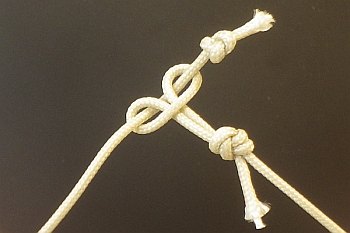 Lark's Head knot
Lark's Head knotThis knot starts with the Loop knot.
Regarding getting the knot loose again, here are a couple of tricks I have discovered from experience:
- Grab the line to which the Lark's Head is attached, on either side of the knot. Loosen the line, then ping it tight again by separating your hands, several times. Often, the Lark's Head will loosen just a little, making it easier to unpick.
- Get a fingernail in between the two strands of the Lark's Head, right where it is sitting on the other line. Work the two loops apart a little. This also can make the knot easier to unpick.
On this site, there's more kite-making info than you can poke a stick at. :-)
Want to know the most convenient way of using it all?
The Big MBK E-book Bundle is a collection of downloads—printable PDF files which provide step-by-step instructions for many kites large and small.
That's every kite in every MBK series.
Lark's Head
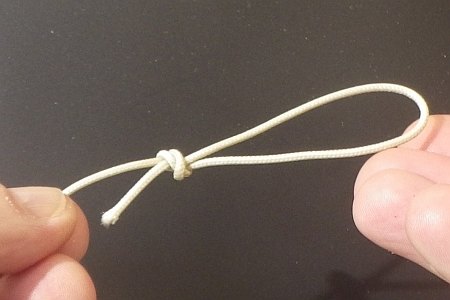 1. Start with any loop knot
1. Start with any loop knot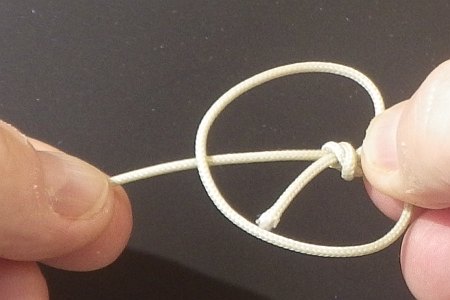 2. Fold loop back over line
2. Fold loop back over line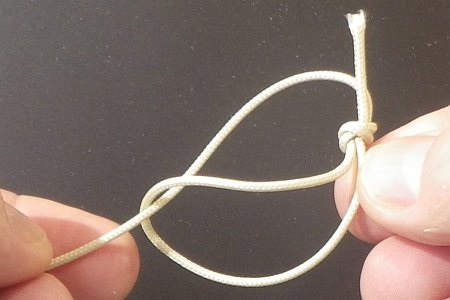 3. Pull line through
3. Pull line through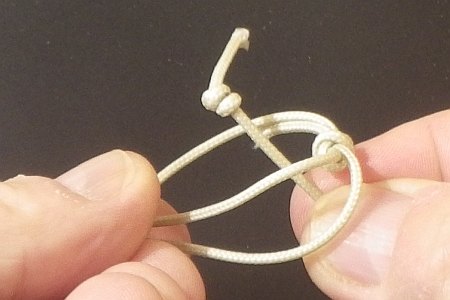 4. Insert knotted bridle line
4. Insert knotted bridle line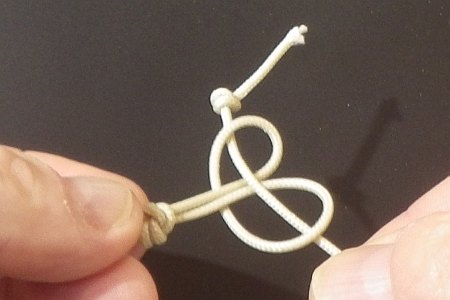 5. Tighten loop around bridle line
5. Tighten loop around bridle line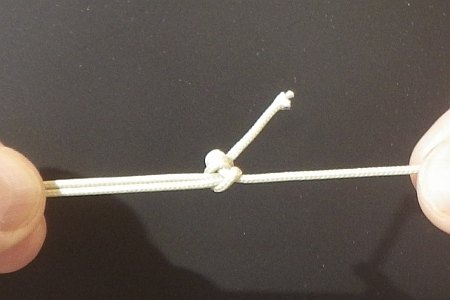 6. Pull against bridle knot
6. Pull against bridle knotThe lighter the line, the more useful those tips might prove to be! When you need reading glasses, 20-pound Dacron line is pretty hard to work with. Personally, I use natural vision-improvement techniques to improve the situation a lot, but that's another story.
Just about every MBK kite uses a short connecting line between the bridle and the flying line. It's part of the bridle, really. The flying line is attached to this connector with a Larks Head knot, making it easy to swap the line from kite to kite. This is illustrated in the photos above. However, to be on the safe side, the short bridle line should really have a stronger strength rating than the flying line.
Where else might you use a Lark's Head? Well, I use it to connect the lower bridle lines of roller and dopero kites to their keels. In those cases the knot stays done up all the time. That's because the kites can be packed away after carefully pulling some of the lower bridle lines' length through the slits in the sail.
One more application: I use the Lark's Head knot to attach tensioning lines to the upper and lower horizontal spar bow lines of the MBK Dowel Sode kite. What a mouthful that was. :-) With the two bowed spars tensioned away from each other, the kite has a tighter sail and flies much better.
Here's one last point about flying line attachment: In this situation, a Larks Head done with a Simple Loop knot has proven to be quite strong. A slight advantage may be gained by using a Figure Eight knot instead.
Cinch
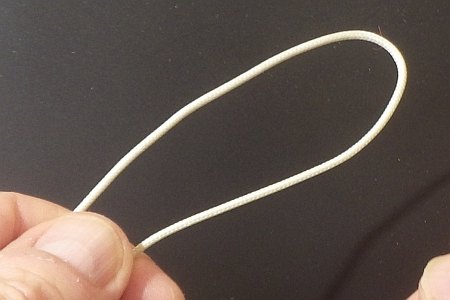 1. Form a loop
1. Form a loop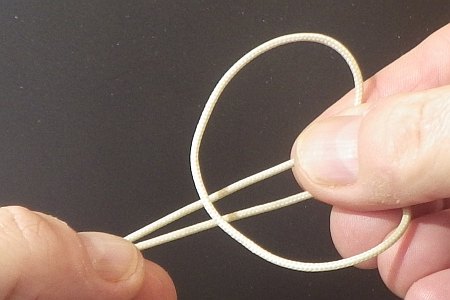 2. Fold loop back over
2. Fold loop back over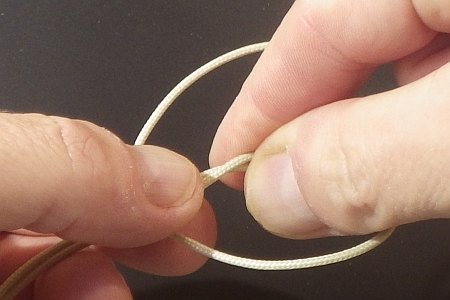 3. Grasp in the middle
3. Grasp in the middle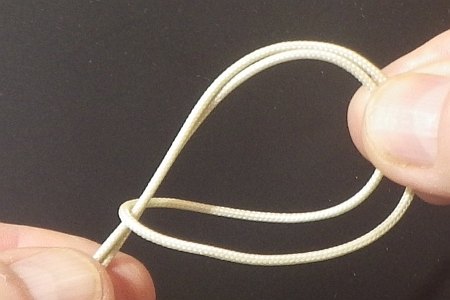 4. Pull through
4. Pull through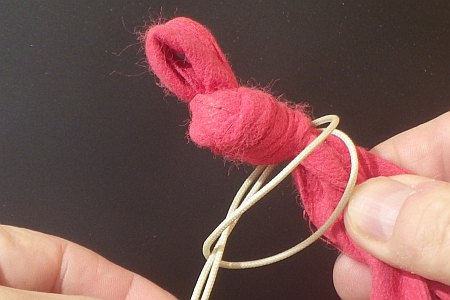 5. Slip over object
5. Slip over object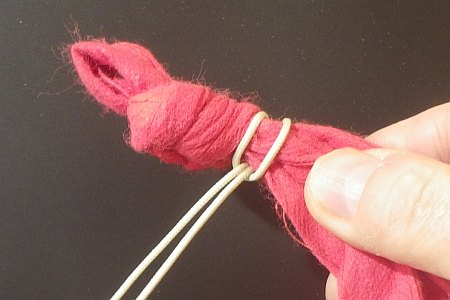 6. Tighten
6. TightenI once called this one the Anchor Loop, before discovering that it was more properly known as the Cinch. However, this really neat method of attaching a kite line to a sand bag anchor belongs on this page, since it resembles the Lark's Head knot. It's even simpler, since you start with a loop in the line that is not already knotted! However, while one end goes to a kite in the air, the other end usually goes to a reel or winder on the ground.
As you will soon find as you look around flying fields, other objects besides knotted sand bags will offer themselves as handy cinch points. You can use a tap, a short pole with a cap on top, and so on.
It's almost too simple to be called a knot; the Cinch is really a cinch to do. :-)
As mentioned earlier, there's more kite making on this site than you can poke a stick at. :-)
Want to know the most convenient way of using it all?
The Big MBK E-book Bundle is a collection of downloads—printable PDF files which provide step-by-step instructions for many kites large and small.
That's every kite in every MBK series.
